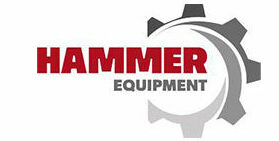Register an account with RME to store your favorite equipment and easily compare between units.
RegisterGrain losses are tricky. They can hit your bottom line in several different ways and quickly add up — from grain left in the field to dockage at the elevator due to poor grain quality. In an economy where margins are razor-thin and every last bushel of clean, quality grain in the tank counts, losses like these mean less money to invest in the future of your operation.
Thankfully, there are ways to harvest more of what you grow. By making smart combine adjustments, taking advantage of narrow harvest windows and implementing helpful harvest technology, you can reap the benefits of a better harvest season.
Here are four tips from Case IH harvesting experts to help make sure you get the most out of your combine, fields and season.
Assess Your Harvest Losses
Before you make any changes to your harvesting tactics, it’s important to first understand where your losses are coming from. Your combine operators manual provides a thorough explanation of how to assess preharvest loss, header loss and machine loss. Start with a preharvest loss check and look at the crop in front of the combine to determine if there is any loss due to wind damage, disease or other circumstances.
To assess machine loss, start by counting the kernels or seeds left in the field after a harvest in a 1-square-foot area across the swath width of your combine. You might be surprised to find that harvest losses of 5% or more aren’t unusual — but the goal is to aim for less than 2% loss (1 bushel per acre on a 50-bushel-per-acre wheat crop) when harvesting standing wheat under good conditions. Many properly adjusted combines can achieve results better than 2% with a little bit of time and attention.
Adjust Your Combine
Everyone wants to thresh and retain as much clean grain as possible. But overdoing it can lead to excess grain damage that can cause problems down the road. Damaged grain and foreign material invite dust and storage problems, which can create favorable conditions for mold growth, insect infestations and grain aeration.
Fine-tuning your machine is a balancing act. Once again, your operators manual contains the information you need to properly adjust your combine. There, you’ll find not only crucial baseline adjustments to make for better grain quality but also a wide variety of tactics on calibrating your equipment for best results. You’ll also find tolerances for chain, belt and sprocket wear, as well as important maintenance tips to avoid combine breakdowns.
Keep Harvesting Windows Top of Mind
To get the most out of narrow harvest windows, start by checking and double-checking your combine for wear and tear. Has your machine been cleaned, repaired and maintained since last harvest? If not, now is the time to perform routine maintenance. Failing to do so can lead to costly combine breakdowns — often during peak harvesting days — that can cause major losses in productivity and profit.
The next best way to make the most of harvesting windows is to invest in technology that helps you overcome difficulties out in the field. Problems like poor weather are unavoidable, but new technology from Case IH makes it easier to contend with variables like moisture, grain damage and more.
Combine Equipment With Technology
Available for Axial-Flow® 250 series combines, AFS Harvest Command™ combine automation from Case IH is one of many tools that can help you maximize your grain savings. With four different modes of operation that prioritize different harvesting outcomes — from grain quality to grain savings to different throughput adjustments — you’re able to choose a mode of operation that matches your harvesting goals and makes up for losses. After setting the crop type, maximum operating speed and power limits, even novice operators can harvest efficiently.
AFS AccuSync™ machine coordination is the latest technology update from Case IH, which connects multiple machines in one field so operators can share coverage maps for maximum efficiency. By removing the need for in-person line of sight and constant radio chatter, you save time and money on otherwise high-dollar inputs while making the most of tight harvest windows.
Make the Most of Your Harvest
No single strategy can compensate for hasty harvest tactics, but making smart combine adjustments, taking advantage of narrow harvest windows and using advanced harvesting technology can drastically reduce your losses. That’s good news for growers who are interested in making their fields work for them — instead of the other way around.
To learn more about industry-leading harvesting tactics and technology, talk with your local Rocky Mountain Equipment dealer for expert-level insight on boosting your harvest equipment.





